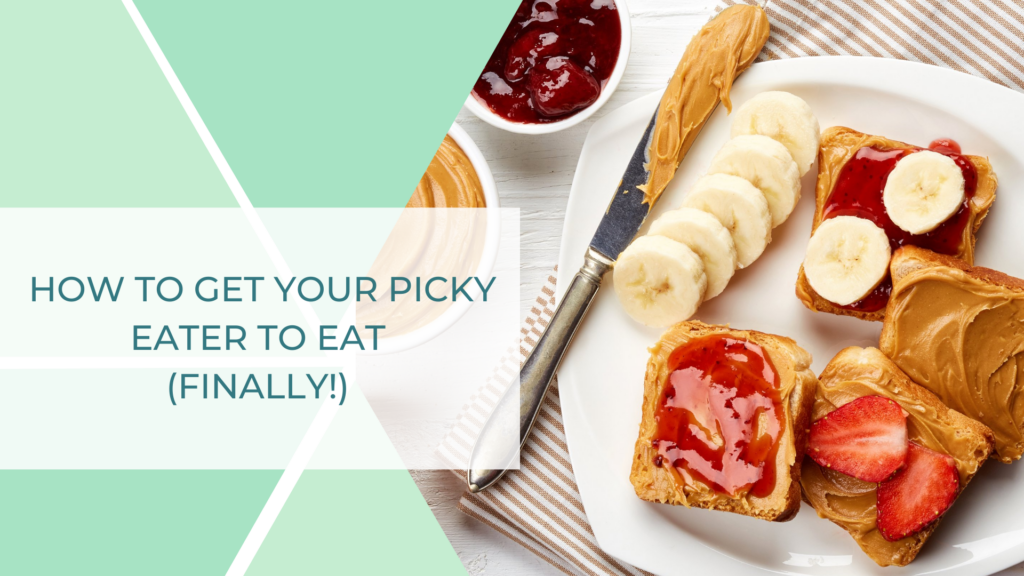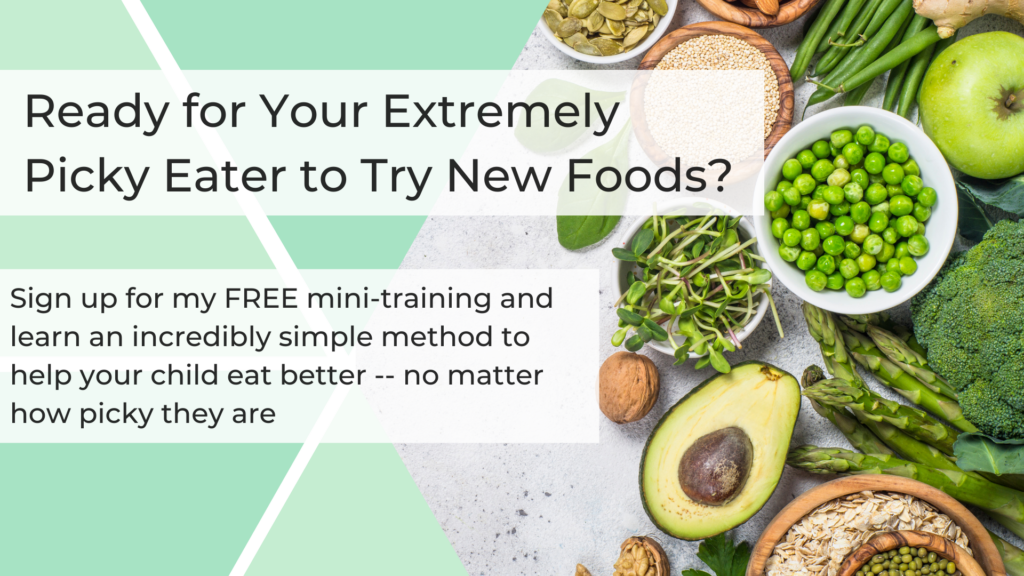This article shares the most important step to take to finally get your picky eater to eat.

How to get a picky eater to eat…that is the question!
It’s the #1 thing that parents come to me for, but I’ve got to be honest, getting kids to eat is NOT my jam. Because here’s the thing: we can’t get our kids to do anything.
As parents we’re told it’s our job to make sure our kids grow up healthy and eat well, so we feel we need to get our kids to eat.
We end up requesting, pushing, negotiating, and bribing – anything to get them to just take a bite. More often than not, it doesn’t work.
That’s because no one can actually control what another person eats. With our super picky eaters especially, no amount of coercion can overpower a strong food aversion. The more we try to push our kids, the more they resist.
You might already be feeling like this approach isn’t working. You’re right. There’s research to prove it. The more involved we are in what goes into our child’s mouth, the more likely we are to get the opposite effects. And those foods that we really push for? Studies show that our efforts backfire. Kids end up really disliking foods they’re pressured to eat (this is especially true when it comes to extreme picky eaters).

Getting Your Picky Eater to Eat Isn’t What You Think
While you can’t “get” your child to eat, you do have the ability to influence what and how they eat.
A parent’s approach to feeding can actually strongly influence a child’s desire and willingness to eat.
I often refer to this the “feeding relationship.” It’s a way to say that the mealtime vibe and the parent-child-food interaction plays a big role in what and how your child eats. The feeding relationship is also a key part to helping your child overcome picky eating.
I’m not going to lie, the feeding relationship can be a bit complicated. But the first step is easy – stop thinking about how you can “get” your child to eat and instead, start to think about how you can support them so they can comfortably eat when they are ready.
In order to make this happen, you need to meet your child where they are at with their eating and to let go of all of your expectations about where they should be, what they should be eating, and how quickly their eating progress should be progressing.
This also means letting go of that urge to “get” them to eat.
When you can accept your child and meet them where they are with their eating, everything changes. I know it sounds a little “woo-woo,” but bear with me because this really works.
How To Get Your Picky Eater to Eat – Finally!
The feeding relationship encompasses so many things beyond meeting your child where they are at with their eating and shifting away from the mindset of “getting them to eat.” It includes your individual mealtime roles (what I like to call staying in your lane), your expectations, and the language you use to talk about food and eating.
This is the very first topic I teach parents in the Eating with Ease program and it can have immediate results.
One parent shared this after he first week in the program:
“Changing our mindset has been huge for us…and it’s produced a few great moments for him. We asked [my son] to interact with a strawberry one night at dinner, thinking he’d lick it or smell it. He ended up cutting it up and even taking a bite!”
Here’s another win that resulted from this mindset shift just one week into the Eating with Ease Program:
“[My son] tried a cheese quesadilla AND french fries this week. He’s been offered these foods for a long time, but this week he ate them both!”
The Eating with Ease Program helps your child get on the path to trying new foods with research-backed strategies that easily fit into chaotic days and busy family life.
This feeding relationship is just a taste of what you will learn and can expect (and there’s even more on this topic, too!).
Imagine having the confidence to help your child comfortably try a variety of new foods with simple, no-pressure techniques that experts use and love.
The Eating with Ease Program can help you get there, and as you can see, many children begin adding new foods in just the first week.
If you’re ready for support for you and your child, send me an email to see if the Program is the right fit for you.



0 Comments